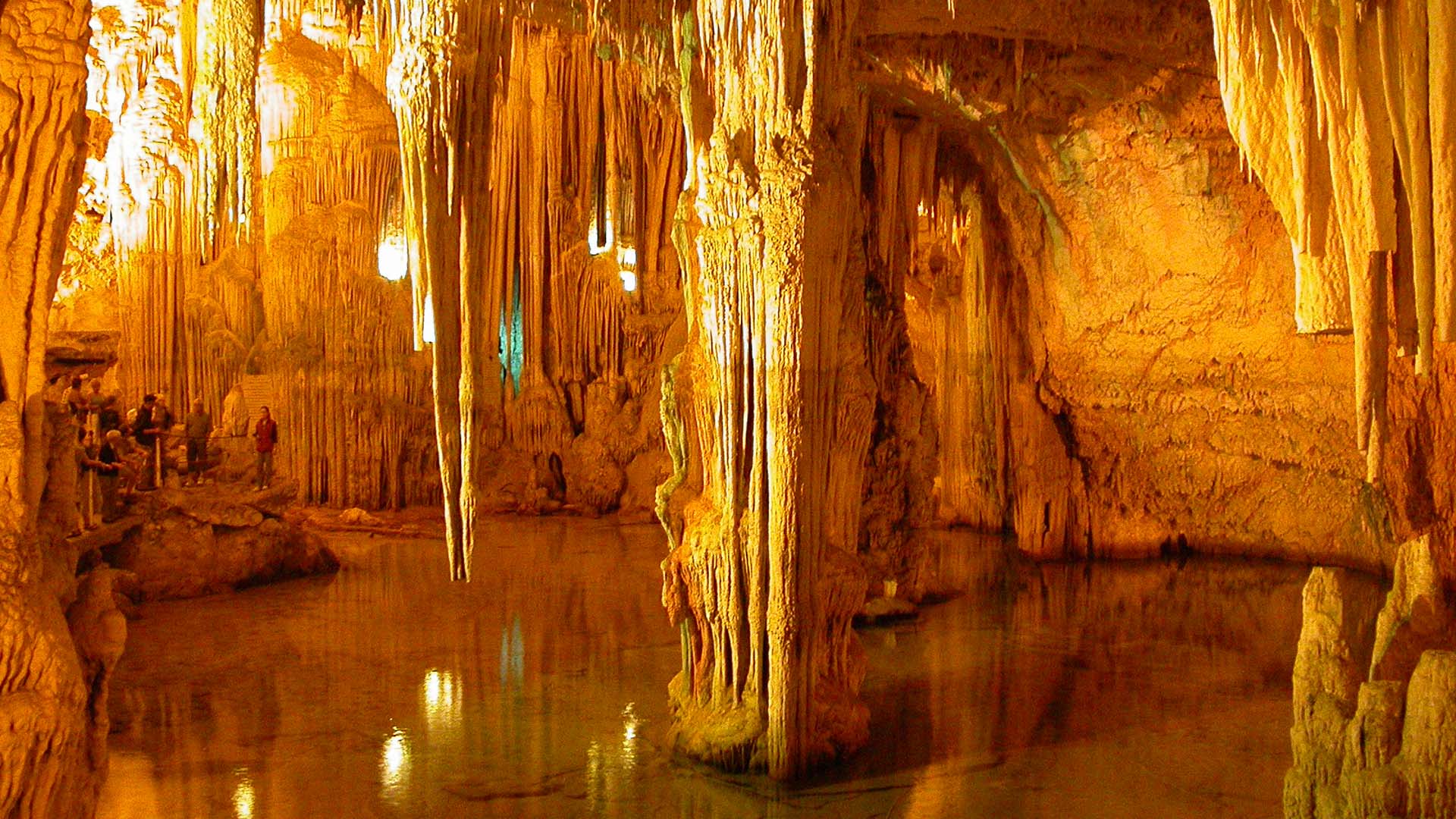Grotta di Nettuno
In the heart of the cliffside of Capo Caccia is situated a scene of the fairytale underworld of the Grotta di Nettuno (Neptune’s Grotto).
A fantasy world of spectacular cave formations, a system of rooms with saltwater lakes extending to approximately 2,500 meters in length.
One of the most fascinating natural jewels in the entire Mediterranean basin, the grotto is a veritable geological wonder that attracts over 150,000 visitors per year. It is accessible by sea with the “Linea Grotte’ boat lines leaving the tourist port every day, or on foot via “Escala del Cabirol’ (“Billy Goat Stairs’), a set of 660 steps cut into the cliff side.
The enchanting sculptures of nature
Undoubtedly it is the limestone formations, the cave formations that nature has patiently created over the course of the centuries that amaze and inspire the eye of the visitor. Majestic and delicate scenery modeled by the creation of stalagmites and stalactites, by the many-shaped crystals and the wonderfully eccentric formations made up of extremely thin strands of calcite.
The tour begins at the great room holding the transparent waters of the Lago Lamarmora (Lake Lamarmora), one of the largest saltwater lakes in all of Europe. It is there that Acquasantiera stands (“The Baptismal Font’), a monumental stalagmite that is approximately 2 m high; at is peak have formed vats, where rainwater collects, thereby forming a precious drinking fountain for birds nesting in the Capo Caccia area.
After a brief descent, you will reach the Sala delle Rovine (“Room of Ruins’) and after this the Majestic Reggia, which can be found the most evocative area of the grotto. Impressive and overwhelming columns arise in this room, almost holding up the ceiling. Among the large flowstone and “scallop’ formations stands out the distinctive stalagmite formation known as the Albero di Natale (“Christmas Tree’). The lake comes to end at a sandy beach known as the Spiaggia dei Ciottolini (“Pebble Beach’) because at one time it was made up of tiny stones. After the Reggia, there is Sala Smith (“Smith Room’), where the Grande Organo (“Great Organ’) can be found, the largest column in the entire grotto. This room is named after the English captain who in the early 1800’s had been one of the first to explore the grotto. After having taken in the small columns that adorn the Sala delle Trine e dei Merletti (“The Lace Room’), the route comes to an end with a view of the Tribuna della Musica (“The Music Gallery’), an evocative balcony from which you can enjoy the view from above of the Reggia area and the of the Lamarmora Lake.

